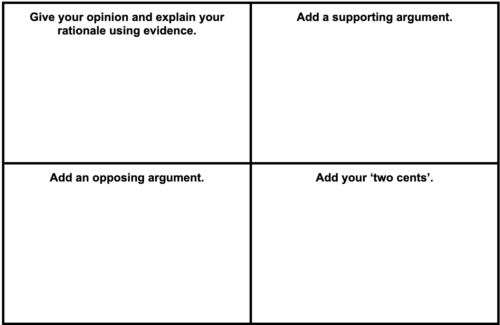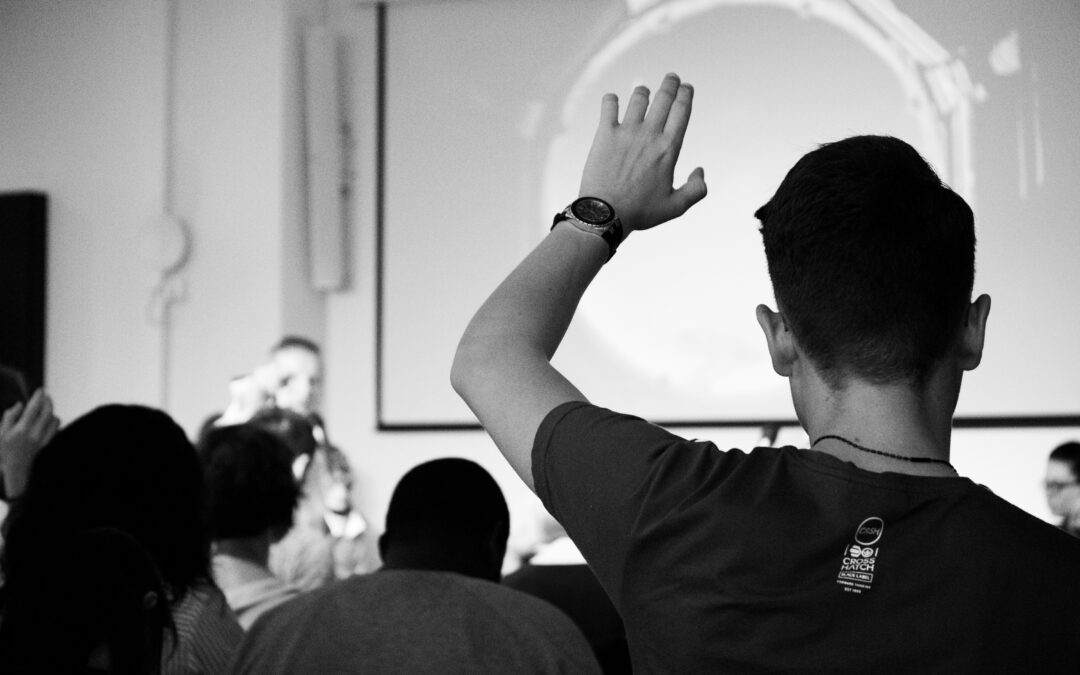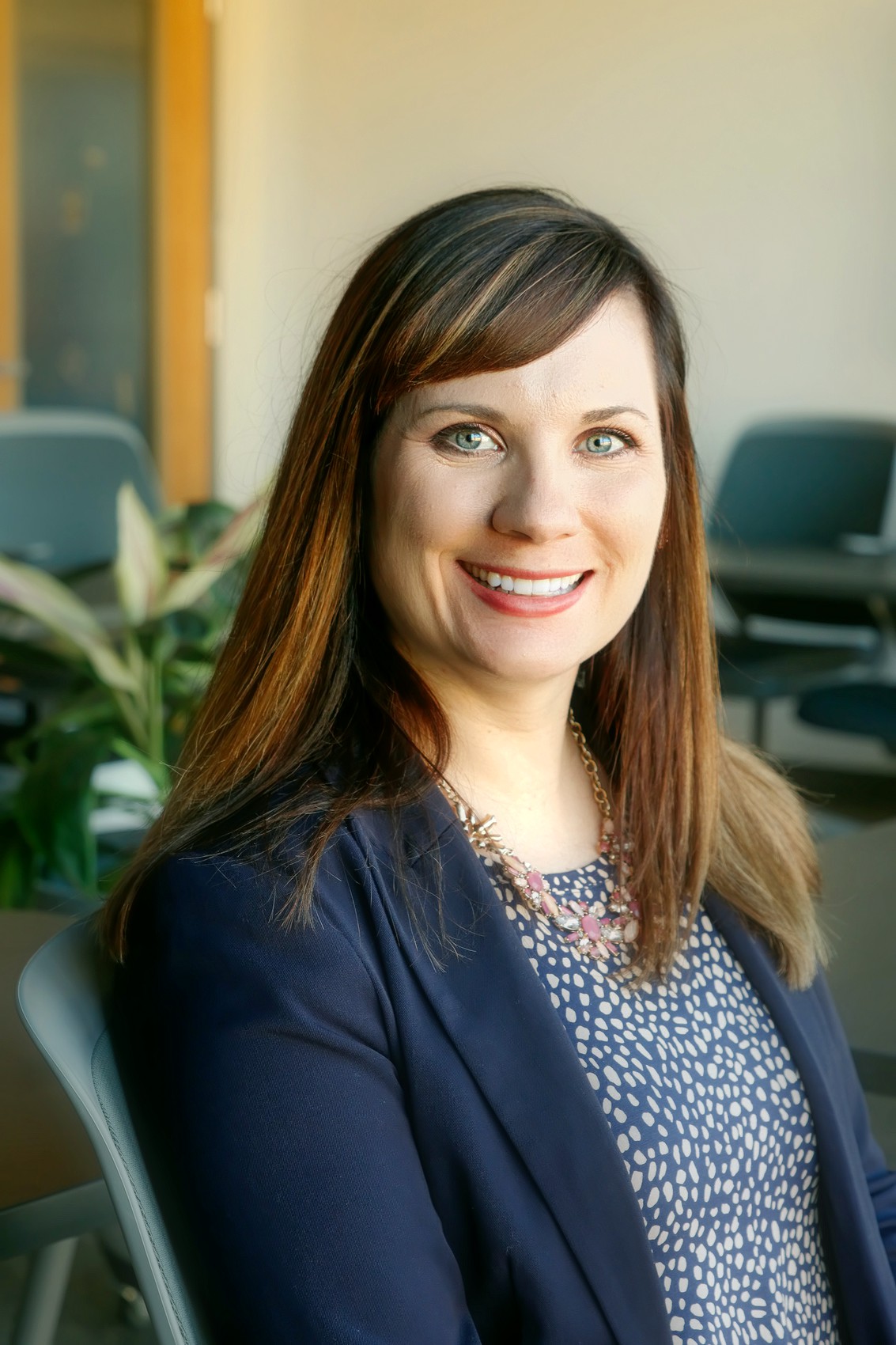Have you ever ended up teaching a class or subject that was the last thing you ever expected to be teaching? For me, that subject was speech and debate–oral interpretation and public forum debate to be specific. When I received this teaching assignment, I was a little terrified. A few years in (and a large learning curve later), debate has become one of my very favorite topics to teach.
The word debate seems to be a little bit of a loaded term these days, and it can be easy to shy away from doing a debate in the classroom. However, if harnessed correctly, a debate has the potential to be one of the most engaging, empowering activities for students that will require them to think very critically and deeply.
Many think of a debate consisting of two people having a heated argument. You may even think of people raising their voices a little bit, perhaps even trying to hurl insults at each other. However, this version of debate is pretty far from what is at the heart of the activity. Merriam-Webster’s dictionary defines the word debate as “a regulated discussion of a proposition between two matched sides.” Synonyms for the word include: to consider, ponder, study, reflect, think over, or weigh.
Let’s unpack that definition. Notice how any hint of heated arguing or yelling isn’t present in any part of the definition or synonyms. One key word to notice is “regulated”. That means proper debates aren’t a free-for-all. If done well, they should be led either by a facilitator or a protocol that follows a set speaking order, giving both sides equal time to speak.
Furthermore, the definition mentions “two matched sides.” In my experience, teachers often have students prepare only one side of a resolution for a classroom debate. However, truly powerful and deep learning in debate comes when a teacher has students prepare BOTH sides of a resolution. Understanding multiple sides of a topic leads students to deeper and more critical thinking.
Debate Carousel Protocol
If you’re interested in dipping your toe into debate, but are unsure of where to start, one of my favorite ways to invite students into a light debate is through a ‘debate carousel’ protocol (Himmele & Himmele, 2017). In this protocol, each student begins with a piece of paper that has four large squares–a 2×2 grid (see Figure A below). The teacher creates some sort of prompt. In my music classes, this prompt might have been something like, “John Williams is the greatest movie music composer of all time.” Then, the protocol follows the process below.
The Process:
- Students write their initial opinion on the prompt with supporting evidence (Square 1).
- Papers are passed to the right (or chosen direction). Students read the previous response and write a statement supporting it (Square 2).
- Papers are passed again. Students read the first two boxes and write an opposing argument (Square 3).
- One final pass allows students to add their own thoughts, supporting their stance with their own reasoning or points made earlier (Square 4).
- Papers are returned to their original owners.
- Discussion & Reflection: Invite volunteers to share thoughts from their papers and facilitate class discussion and reflection.
FIGURE A
Debate Team Carousel
Debate Prompt: Insert teacher prompt here

Source: Total Participation Techniques (Himmele & Himmele, 2017).
There are lots of variations you can use to tweak this basic order of events. I like this protocol because by participating in it, students have to create arguments and opinions for both sides of a prompt. This is not only critical thinking–it’s a super healthy life skill! Through analyzing and evaluating sources, opinions, and rationale, students are nurtured in higher-order thinking in a healthy and non-threatening environment which in my experience, leads to rich discussion afterwards.
To learn more about the debate carousel protocol, check out:
Total Participation Techniques: Making Every Student an Active Learning, by Himmele & Himmele.
Debate Team Carousel:
https://learningcurrents.weebly.com/uploads/7/1/6/6/7166903/debate_team_carousel_protocol__1_.pdf
Article Sources:
“Debate.” Merriam-Webster.com Dictionary, Merriam-Webster, https://www.merriam-webster.com/dictionary/debate. Accessed 27 Mar. 2024.
Himmele, P. & Himmele, W. (2017). TOTAL Participation Techniques: Making Every Student an Active Learner. ASCD.
Photo by Felicia Buitenwerf on Unsplash




